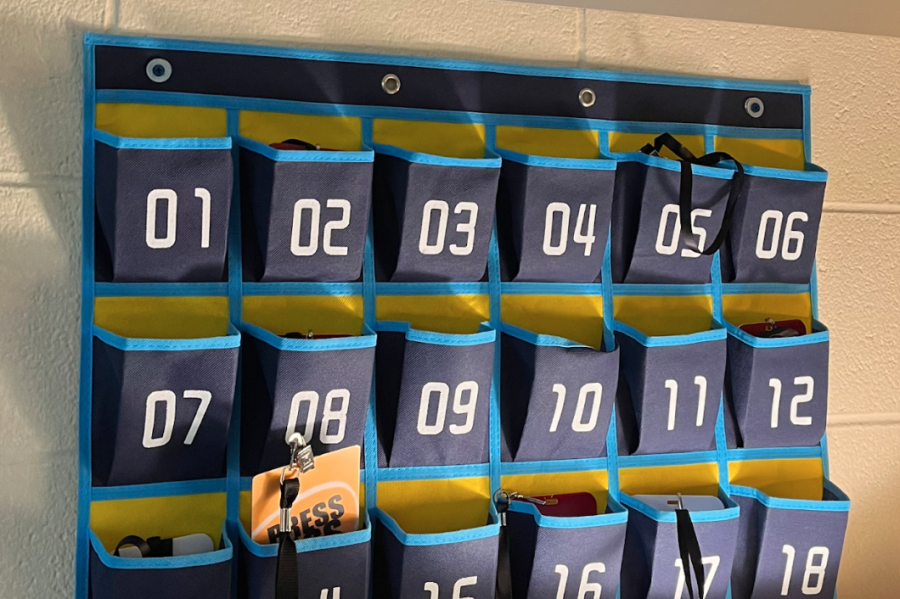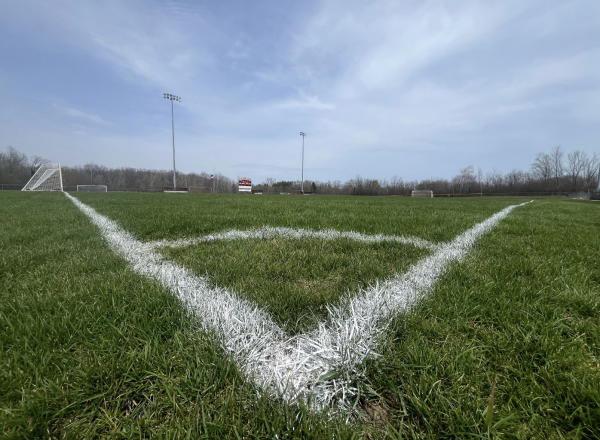Phone pockets: Keeping students focused
Students place their phones into non-accessible pockets for the duration of class in order to be more focused with their lesson.
As technology is advancing, phones and other devices are becoming everyday products, especially for many in high school. Dinging notifications and bright screens distract students and can affect focus within schools.
The National Library of Medicine has found that ringing cell phones have been shown to distract over 68% of students. Having the ringer on within class can disrupt the work ethic of students and the teacher giving their lesson.
The discussion on which method is best to help students focus, is everlasting. However, at Homestead the use of phone pockets is put into play.
Each teacher at Homestead uses a different method to keep students engaged in their classroom, whether its phones away in backpacks or putting them in the phone pockets out of reach.
“The phone policy is a way to minimize the number of distractions within the classroom. Ultimately the policy helps students to be more focused.” Monique Porter and Matt Zavada, assistant principals, stated about the phone policy here at Homestead.
The phone pockets allow students to be completely separated from their mobile devices for the entire class period. Without their phone by their side, high school students can be fully engaged in the classroom and their teachers’ instruction
On the other hand, sometimes having students keep their phones helps teach a lesson of temptation of when and where to use a device in an important situation.
“Sometimes phones are a necessary means of communication, but usually students use their phones for social media or games or movies, which creates a major distraction, resulting in decreased focus on classwork,” Tracy Grace, science teacher, said.
Grace has promoted a healthy use of cellphones within the classroom. By not utilizing phone pockets, she has used other systems such as charging stations, where students can leave their device charging during class time without having access to it.
Phones are the only thing that can keep students distracted. Vital parts of life such as getting enough sleep and eating well contribute to the ability to focus during class time.
“In the classroom, making activities more hands-on and interactive helps keep students engaged and off their phones. Critical thinking and problem solving activities make students focus more,” Nicholas Schueller, history teacher, said.
Schueller integrates hands-on activities into the classroom that helps his students learn while also being off their cell phones. In a world dominated by technology, it is important to have interactive working time within the classroom.
Focus is something essential to students thriving in the school environment. Finding the balance between healthy cell phone usage and zoning in classrooms has become vital to high school students, not just at Homestead.

Sadie Shaw is senior at Homestead High School. She is excited to be part of Publications this year! In her free time, Sadie is involved with a rowing team,...





